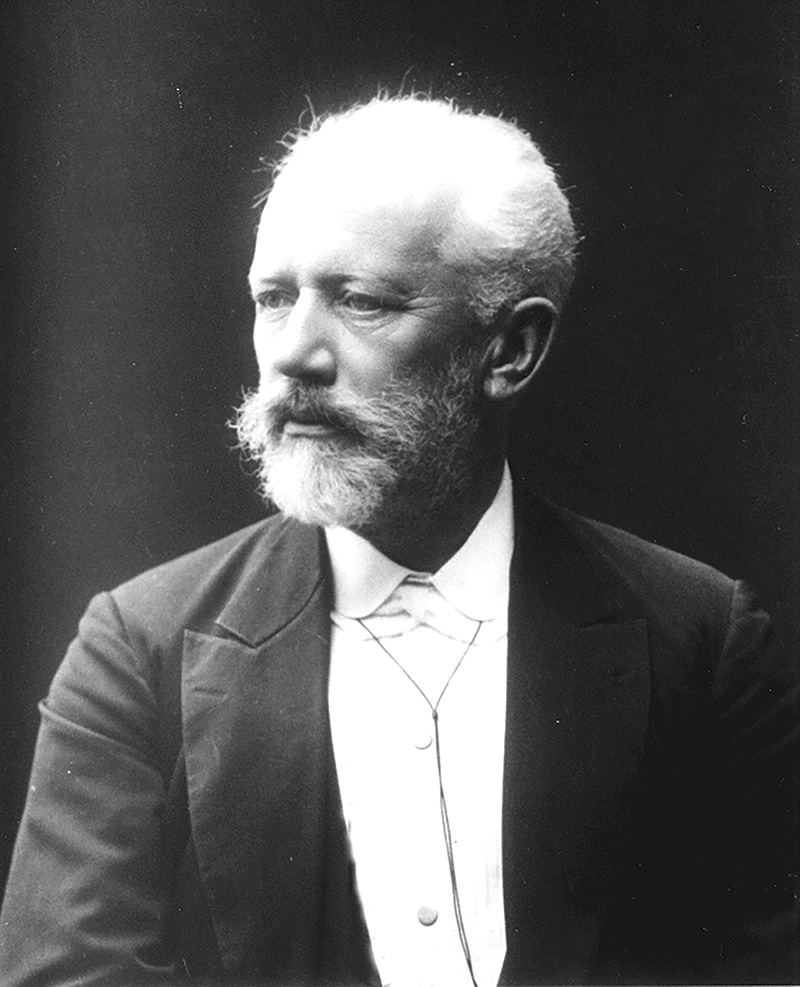Piotr Ilyich Tchaikovsky

Born: May 7, 1840, Votkinsk, Russia
Died: November 6, 1893, Saint Petersburg, Russia
Trio for Piano, Violin and Cello in A Minor, Op. 50
- Composed: 1881-82
- Premiere: October 30, 1882 for the Russian Musical Society in Moscow
- Duration: approx. 50 minutes
Nadezhda Filaretovna von Meck was a 19th-century Russian businesswoman and patron of the arts, especially music. She supported several well-known artists of the day, including Nikolai Rubinstein and Claude Debussy, but she is perhaps best known for her relationship to Piotr Ilyich Tchaikovsky, whom she supported financially for 13 years, under the condition that they were never to meet in person. When von Meck requested a piano trio from Tchaikovsky for her in-house musicians to perform, he demurred:
Is it not unnatural to combine three such individual instruments as violin, cello and piano? The qualities of each of them are lost. The lyrical and wonderfully warm timbres produced by the violin and the cello can be accompanied by the king of instruments, but the latter tries in vain to show its ability to sing against its rivals.
Yet, the composer did indeed set out to write a trio the following year, explaining, with characteristic doubt, “I won’t hide from you the great effort of will required to set down my musical ideas in this new and unusual form. But I should like to overcome all these difficulties.”
It proved to be a sprawling work: although consisting of only two movements, the Piano Trio Op. 50 is a marathon to perform. The two-part structure of the second movement combines with the opening movement to create what is essentially a three-movement work. Titled Pezzo elegiaco (“Elegiac Piece”) the first movement is a lament of three heartfelt tunes braided together with their variations into an extended quasi-sonata form, capped with a coda that boils over into an agitated animato in A major before settling back down into A minor.
The second movement is a sequence of variations on a cantabile theme not unlike those that enrich his orchestral works: organic enough to be convincingly folk-like and convincingly Russian in spite of being fully a product of the composer’s imagination. The prodigious diversity of the subsequent variations shows how rich that imagination is: each variation reveals its own character and charm while underscoring Tchaikovsky’s genius. Among them, the composer includes a fugue, a mazurka, an elegy and a waltz to a new tune using the theme as a countermelody. The final variation, Allegro risoluto e con fuoco, begins regally but soon transforms into a Russian Festival Finale of symphonic proportions. The coda, Andante con moto, is fully operatic in its passion and in its drama, winding down only in the final nine measures to leave the listener exhausted and spent.
Piotr Ilyich Tchaikovsky’s piano trio is sui generis in its scope and in its aspirations, in its challenges to its performers and in its rewards. But in its 180-degree swings from elation to despair, from comedy to tragedy, from stoicism to pathos, it is impossible to see anything other than a reflection of the internalized angst of the composer himself.
—Dr. Scot Buzza